Books
Teaching Green: The Middle Years: Hands-On Learning in Grades 6-8
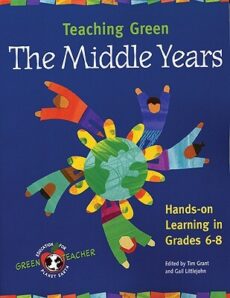
For anyone working with young people in grades six through eight, whether inside or outside schools, Teaching Green contains over fifty of the best activities and teaching strategies contributed to Green Teacher magazine over the last ten years by educators from across North America. Organized into green teaching categories, the book offers a host of ideas for hands-on learning about biodiversity, ecology, resource consumption, green technology and the world around us.
This collection will inspire educators who are seeking innovative strategies for incorporating green themes into their programs. Tim Grant and Gail Littlejohn are the editors of Green Teacher magazine, North America's award-winning environmental teaching resource. They have previously edited two other Green Teacher series books.
Wind Power
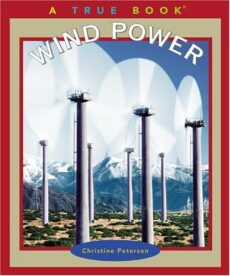
The familiar small, square format and the large, well-spaced type of volumes in the long-running True Book umbrella series have been preserved in this new offshoot, Environment & Conservation. Petersen provides readers with a lucid picture of the sun and wind as natural forces before introducing some of the technology (windmills, turbines, solar panels) used to harness energy on a large scale. A few more diagrams (how a windmill works) would have been helpful, but the captioned photos are well chosen, and the science and the explanations of the technology are eminently clear. Each book ends with a forecast of the future that informs kids about the advantages and disadvantages of such renewable resources and speculates on their use in years to come. Slick paper, colored screens, and attractive page layouts contribute further to a fine addition to the True Book stable. [From Booklist. By Stephanie Zvirin, American Library Association]
Environmental Experiments About Renewable Energy
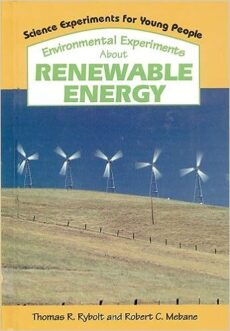
This title contains 16 easy-to-perform experiments, each of which answers a question about sources of renewable energy. Rybolt and Mebane begin with a brief description of atoms and molecules and an explanation of why the study of the Earth is important. Each project is followed by a discussion of the various phenomena explored, as well as an “Other Things to Try” section of related activities. Adult supervision is emphasized throughout the book in capital letters. Black-and-white drawings enhance the presentation. Most of the materials required are easily available. Simple, yet thorough, this volume is excellent for teachers to use with their classes or for children to use on their own. [From School Library Journal. By Helen Rosenberg, Chicago Public Library, IL.]
Good news in the wind: Windmill history and more than 20 activities for young explorers
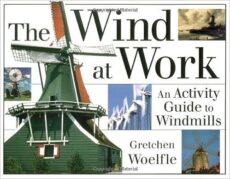
This combination of science, history, and activities centers around the use of wind as a source of power. The historical information is excellent, and includes Persian windmills of 1000 years ago, Dutch windmills of the 17th century, and modern wind turbines. Amusing anecdotes and intriguing facts are woven into the text, keeping it lively. An American farmer brags about all of the tasks his windmill accomplishes, including sawing wood, running a washing machine, and powering a pipe organ. A fascinating section on a windmiller's daily life reveals how the expression “rule of thumb” came to be. Black-and-white historical prints, photographs, and diagrams appear throughout. The mechanics of various windmills are briefly explained, but the emphasis is more on what the machines can do rather than on how they work. The well-balanced presentation offers worldwide coverage and objective information regarding the pros and cons of wind power compared to other sources. Each chapter ends with instructions for several projects. Some, like making a wind sock and wind vane, are directly related to wind power. Many others, though, have a vaguer connection. Activities such as “Create Landscape Art” and “Sing a Song of the American West” may not capture the imagination of children exploring the book on their own, but could work perfectly as resources for teachers or parents. Appendixes include a list of windmills and turbine sites, energy associations, environmental groups, and related career opportunities. A worthwhile purchase. [From School Library Journal. By Steven Engelfried, West Linn Public Library, OR.]
Energy
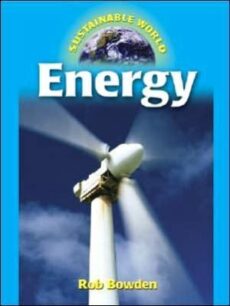
Sustainable living — its challenges, current technology, and future — is the subject of these titles in the new Sustainable World series. Following an overview of current dependency on fossil fuels and an explanation of the costs of using nonrenewable energy sources, Energy briefly introduces various forms of sustainable energy — water, wind, sun, geothermal sources — and takes a look at where sustainable technology is headed.
Food and Farming follows a similar format that first presents conventional techniques of food production, but focuses primarily on sustainable agriculture methods. Both books include a final chapter about basic lifestyle choices that can make a difference, from buying locally grown organic food to choosing long-lasting fluorescent light bulbs. Bowden writes with admirable simplicity about complicated subjects, and he's careful to separate facts from opinions when he quotes others. Students will find plenty of report fodder here, but the clear presentations, excellent color photos, and gripping statistics will attract readers curious about their generation's most pressing issues. A glossary and brief list of resources close both titles. [From Booklist. By Gillian Engberg]
Energy Alternatives
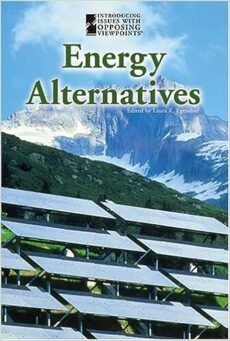
Energy Alternatives is an entry in an offshoot of the “Opposing Viewpoints” series which attempts to make environmental information accessible to a younger audience. Including color photographs, charts, maps, and graphs, the volumes tackle broad issues of environmental concern. In Energy Alternatives, journalists, experts, and analysts with a variety of perspectives offer ideas about the need, availability, and costs of energy sources. Environment explores “the balance between protecting the natural world and encouraging economic growth and development.” In both books, fact-based questions introduce each reading, and critical-thinking exercises close each section. Students are encouraged to draw conclusions based on comparisons of the readings. Although there is some minimal background information about each author, none is offered for the publications from which the articles are derived. Some of the material is already dated. Nonetheless, these titles can serve as introductions to controversial topics and encourage discussion and further exploration. [From School Library Journal. By Eva Elisabeth VonAncken, Trinity-Pawling School, Pawling, NY]
